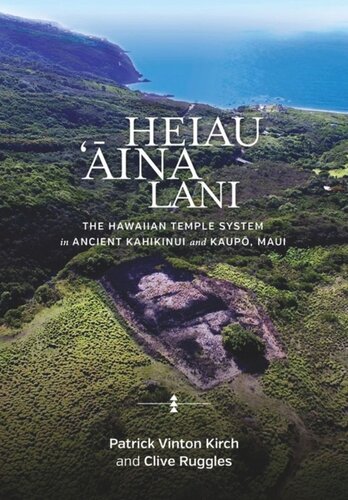

Most ebook files are in PDF format, so you can easily read them using various software such as Foxit Reader or directly on the Google Chrome browser.
Some ebook files are released by publishers in other formats such as .awz, .mobi, .epub, .fb2, etc. You may need to install specific software to read these formats on mobile/PC, such as Calibre.
Please read the tutorial at this link: https://ebookbell.com/faq
We offer FREE conversion to the popular formats you request; however, this may take some time. Therefore, right after payment, please email us, and we will try to provide the service as quickly as possible.
For some exceptional file formats or broken links (if any), please refrain from opening any disputes. Instead, email us first, and we will try to assist within a maximum of 6 hours.
EbookBell Team

5.0
68 reviewsHeiau, ‘Āina, Lani is a collaborative study of 78 temple sites in the ancient moku of Kahikinui and Kaupō in southeastern Maui, undertaken using a novel approach that combines archaeology and archaeoastronomy. Although temple sites (heiau) were the primary focus of Hawaiian archaeologists in the earlier part of the twentieth century, they were later neglected as attention turned to the excavation of artifact-rich habitation sites and theoretical and methodological approaches focused more upon entire cultural landscapes. This book restores heiau to center stage. Its title, meaning “Temples, Land, and Sky,” reflects the integrated approach taken by Patrick Vinton Kirch and Clive Ruggles, based upon detailed mapping of the structures, precise determination of their orientations, and accurate dating.
Heiau, ‘Āina, Lani is the outcome of a joint fieldwork project by the two authors, spanning more than fifteen years, in a remarkably well-preserved archaeological landscape containing precontact house sites, walls and terraces for dryland cultivation, and including scores of heiau ranging from simple upright stones dedicated to Kāne, to massive platforms where the priests performed rites of human sacrifice to the war god Kū. Many of these heiau are newly discovered and reported for the first time in the book.
The authors offer a fresh narrative based upon some provocative interpretations of the complex relationships between the Hawaiian temple system, the landscape, and the heavens (the “skyscape”). They demonstrate that renewed attention to heiau in the context of contemporary methodological and theoretical perspectives offers important new insights into ancient Hawaiian cosmology, ritual practices, ethnogeography, political organization, and the habitus of everyday life. Clearly, Heiau, ‘Āina, Lani repositions the study of heiau at the forefront of Hawaiian archaeology.